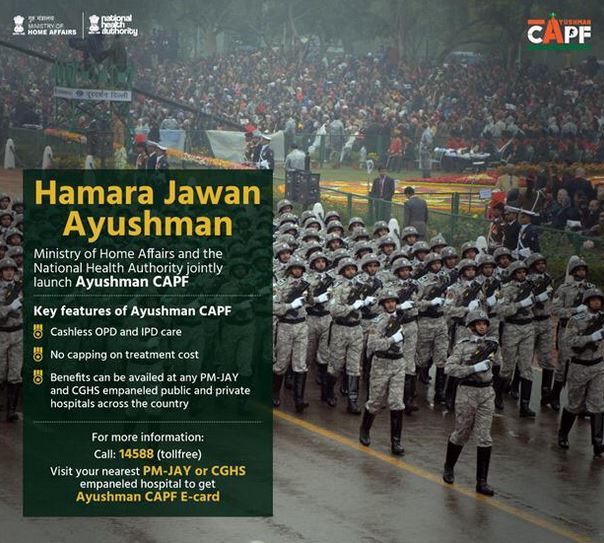Note4Students
From UPSC perspective, the following things are important :
Prelims level: MSP system
Mains level: Economics of MSP
The row over legally guaranteed MSP doesn’t seem to be settled down in near terms.
Farmers’ demand
- Farmer unions protesting are raising two fundamental demands.
- The first is for repealing the three agricultural reform laws enacted by the Centre.
- The second is to provide a legal guarantee for the minimum support prices (MSPs) that the Centre declares for various crops every year.
- Currently, there is no statutory backing for these prices or any law mandating their implementation.
Note: The MSP is now applicable on 23 farm commodities: 7 cereals (paddy, wheat, maize, bajra, jowar, ragi and barley), 5 pulses (chana, arhar, moong, urad and masur), 7 oilseeds (groundnut, soyabean, rapeseed-mustard, sesamum, sunflower, nigerseed and safflower) and 4 commercial crops (sugarcane, cotton, copra and raw jute).
Can MSP be made legally binding?
Yes. There are two ways it can be done.
(1) To force private buyers to pay it
- In this case, no crop can be purchased below the MSP, which would also act as the floor price for bidding in mandi auctions.
- There’s already a precedent: In sugarcane, mills are required by law to pay growers the Centre’s “fair and remunerative price” – UP and Haryana fix even higher “state advised prices” – within 14 days of supply.
- In no other crop is the compulsion to pay the government-announced MSP thrust on the private trade/industry.
(2) The government itself buying the entire crop that farmers offer at the MSP
Various govt agencies such as the Food Corporation of India, the National Agricultural Cooperative Marketing Federation of India, and the Cotton Corporation of India (CCI) do procure a large chunk of commodities on MSP.
But how much produce can the government procure at MSP?
- The MSP value of the total production of the 23 crops worked out to around Rs 10.78 lakh crore in 2019-20.
- Not all this produce, however, is marketed. Farmers retain part of it for self-consumption, the seed for the next season’s sowing, and also for feeding their animals.
- The marketed surplus ratio for different crops is estimated to range differently for various crops.
- It ranges from below 50% for ragi and 65-70% for bajra (pearl millet) and jawar (sorghum) to 75% for wheat, 80% for paddy, 85% for sugarcane, 90% for most pulses, and 95%-plus for cotton, soyabean etc.
- Taking an average of 75% would yield a number of just over Rs 8 lakh crore.
- This is the MSP value of production that is the marketable surplus — which farmers actually sell.
So, is this MSP money paid out of the government’s pocket?
Not really!
- To start with, one must exclude sugarcane from the calculations. The onus for paying cane MSP, as earlier pointed out, lies on sugar mills and not the government.
- Secondly, the government is already procuring many crops – especially paddy, wheat, cotton, and also pulses and oilseeds.
- Thirdly, government agencies don’t have to buy every single grain that comes to the market. Mopping up even a quarter or third of the market arrivals is usually enough to lift prices.
- Fourth, the crop bought on government account also gets sold. While such sales in wheat and paddy – which are distributed at super-subsidized rates under the National Food Security Act.
- This entails heavy losses, but those are far less in the remaining MSP crops. The revenues realized from sales would partly offset the expenditures from MSP procurement.
All in all, the additional fiscal outgo, from the government undertaking the maximum required procurement for guaranteeing MSP to farmers, may not be more than Rs 1-1.5 lakh crore per year.
So, is the MSP system all okay?
Nope!
- The government undertaking to buy at MSP is definitely better than forcing private players. Their going out of business would ultimately hurt farmers most.
- However, even assured government MSP-based procurement is fraught with problems.
- The coverage of MSPs today does not extend to fruits, vegetables, and livestock products that together have a 45% share in the gross value of the output of India’s agriculture, forestry, and fishing sector.
- The value of milk and milk products alone is more than that of all cereals and pulses combined.
Limitations for govt.
- Extending MSP to all farm produce and guaranteeing it through law is hugely challenging, fiscally and otherwise.
- It also explains why economists increasingly are in favor of guaranteeing minimum “incomes” rather than “prices” to farmers.
- One way to achieve that is via direct cash transfers either on a flat per-acre (as in the Telangana government’s Rythu Bandhu scheme) or per-farm household (the Centre’s PM Kisan Samman Nidhi) basis.
Back2Basics:
(1) Rythu Bandhu Scheme
- Under Rythu Bandhu, the Telangana government gives every beneficiary farmer Rs 4,000 per acre as “investment support” before every crop season.
- The objective is to help the farmer meet a major part of his expenses on seed, fertilizer, pesticide, and field preparation.
- The scheme covers 1.42 crore acres in the 31 districts of the state, and every farmer owning land is eligible.
(2) Pradhan Mantri Kisan Samman Nidhi
- Under this program, vulnerable landholding farmer families, having cultivable land up to 2 hectares, will be provided direct income support at the rate of Rs. 6,000 per year.
- This income support will be transferred directly into the bank accounts of beneficiary farmers, in three equal installments of Rs. 2,000 each.
- Around 12 crore small and marginal farmer families are expected to benefit from this.
Get an IAS/IPS ranker as your 1: 1 personal mentor for UPSC 2024
Attend Now









